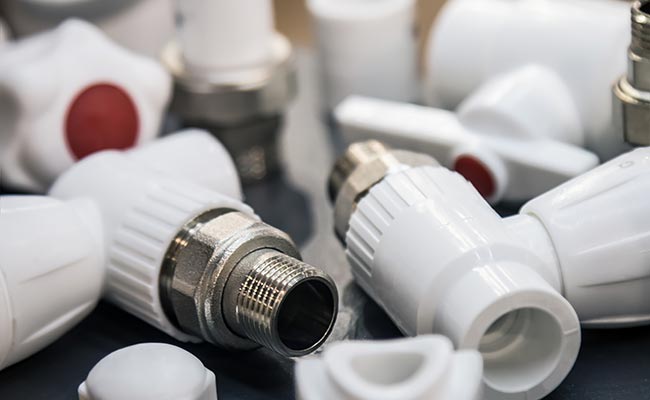True union ball valves are sized by the nominal pipe size (NPS) they connect to, such as 1/2″, 1″, or 2″. This size refers to the internal diameter of the matching pipe, not the valve’s physical dimensions, ensuring a perfect fit.
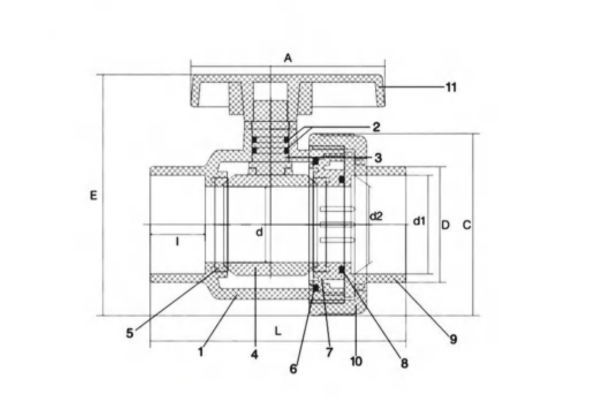
This sizing seems simple, but it’s where many mistakes happen. My partner in Indonesia, Budi, knows this well. His customers, from large contractors to local retailers, can’t afford a mismatch on-site. A single wrong order can disrupt the entire supply chain and project timeline. That’s why we always focus on clarity. Let’s break down the most common questions about these essential valves to ensure every order is the right one from the start.
What is a true union ball valve?
A valve fails, but it’s glued permanently into the line. Now you have to drain the entire system and cut out a whole section of pipe just for a simple repair.
A true union ball valve is a three-piece design. It has a central body that can be easily removed for maintenance or replacement by unscrewing two “union” nuts, without ever having to cut the connected pipe.
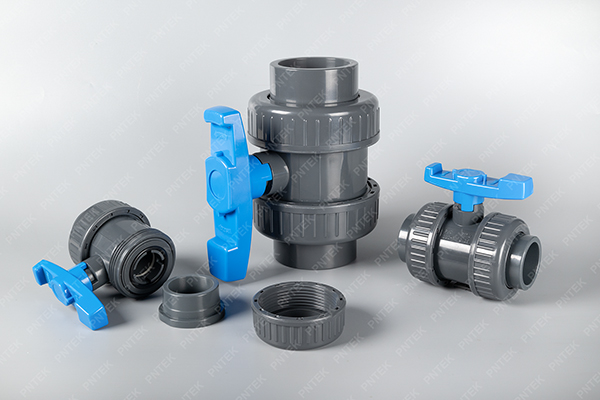
Let’s break down why this design is so important for professionals. The “true union” part refers specifically to the connections on both sides of the valve. Unlike a standard compact valve that is permanently solvent-welded into a line, a true union valve has three distinct components that can be taken apart.
The Key Components
- Two Tailpieces: These are the ends that are permanently attached to the pipes, usually via solvent welding for PVC. They form the stable connection to your system.
- One Central Body: This is the core of the valve. It contains the ball mechanism, stem, handle, and seals. It sits securely between the two tailpieces.
- Two Union Nuts: These large, threaded nuts are the magic. They slide over the tailpieces and screw onto the central body, pulling everything together and creating a tight, waterproof seal with O-rings.
This modular design is a game-changer for maintenance. You simply unscrew the nuts, and the entire valve body lifts right out. This feature is a core value we offer at Pntek—smart design that saves labor, money, and system downtime.
How to tell what size a ball valve is?
You have a valve in your hand, but there are no obvious markings. You need to order a replacement, but guessing the size is a recipe for expensive errors and project delays.
The size of a ball valve is almost always embossed or printed directly on the valve body. Look for a number followed by “inch” (“) or “DN” (Diameter Nominal) for metric sizes. This number corresponds to the nominal pipe size it fits.
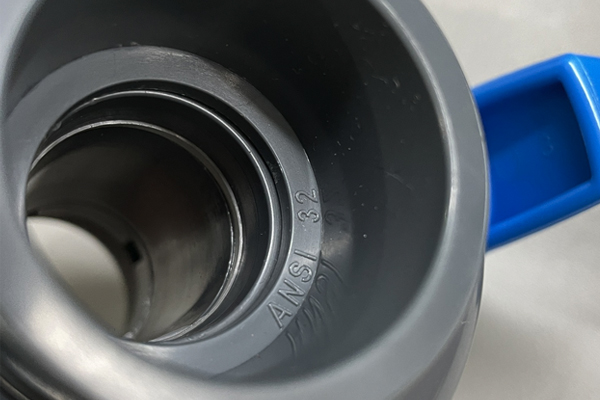
Valve sizing is based on a system called Nominal Pipe Size (NPS). This can be confusing at first because the number isn’t a direct measurement of any specific part of the valve itself. It’s a standard reference.
Understanding the Markings
- Nominal Pipe Size (NPS): For PVC valves, you’ll see common sizes like 1/2″, 3/4″, 1″, 1 1/2″, 2″, and so on. This tells you it’s designed to fit on a pipe with that same nominal size. In short, a 1″ valve fits a 1″ pipe. It’s that direct.
- Diameter Nominal (DN): In markets that use metric standards, you will often see DN markings instead. For example, DN 25 is the metric equivalent of NPS 1″. It’s just a different naming convention for the same industry-standard pipe sizes.
When you’re inspecting a valve, check the handle or the main body. The size is usually molded right into the plastic. If there are no markings at all, the only sure way is to measure the inside diameter of the valve’s socket, which is where the pipe goes. This measurement will closely match the outside diameter of the corresponding pipe it’s meant for.
What is the difference between single union and double union ball valves?
You bought a “union” valve expecting easy removal. But when you try to service it, you find that only one side unscrews, forcing you to bend and strain the pipe to get it out.
A single union valve has one union nut, allowing disconnection from only one side of the pipe. A double union (or true union) ball valve has two union nuts, allowing the body to be completely removed without stressing the pipeline.
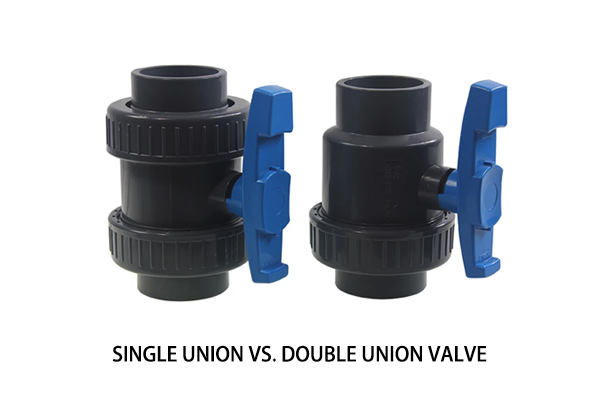
This distinction is absolutely critical for true serviceability and professional work. While a single union valve is slightly better than a standard compact valve, it doesn’t offer the full flexibility needed for long-term maintenance.
Why Double Union is the Professional Standard
- Single Union: With a single union nut, one side of the valve is permanently fixed to a pipe end. To remove it, you unscrew the one nut, but then you have to physically pull or bend the pipe to get the valve out. This puts massive stress on other fittings and can cause new leaks down the line. It’s an incomplete solution that can create more problems.
- Double Union (True Union): This is the professional standard and what we produce at Pntek. With two union nuts, both pipe connections can be loosened independently. The valve body can then be lifted straight up and out of the line with zero stress on the piping. This is essential when a valve is installed in a tight space or connected to sensitive equipment like a pump or filter.
What is the standard size of a full bore ball valve?
You’ve installed a valve, but now the water pressure in the system seems lower. You realize the hole inside the valve is much smaller than the pipe, creating a bottleneck that restricts flow.
In a full bore (or full port) ball valve, the size of the hole in the ball is engineered to match the inside diameter of the pipe. So, a 1″ full bore valve has a hole that is also 1″ in diameter, ensuring zero flow restriction.
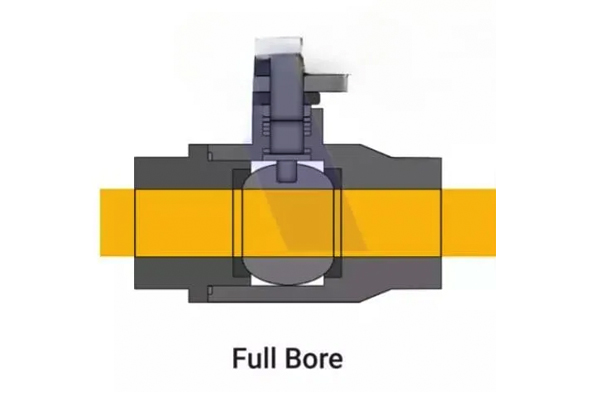
The term “full bore” refers to the internal design and performance of the valve, not its external connection size. It is a critical feature for efficiency in many applications.
Full Bore vs. Standard Port
- Full Bore (Full Port): The hole through the ball is the same size as the inner diameter (ID) of the pipe it’s connected to. For a 2″ valve, the hole is also 2″. This design creates a smooth, completely unobstructed path for the fluid. When the valve is open, it’s like it isn’t even there. This is crucial for systems where you need to maximize flow and minimize pressure drop, such as main water lines, pump intakes, or drainage systems.
- Standard Port (Reduced Port): In this design, the hole through the ball is one size smaller than the pipe size. A 1″ standard port valve might have a 3/4″ hole. This slight restriction is acceptable in many applications and makes the valve itself smaller, lighter, and less expensive to manufacture.
At Pntek, our true union ball valves are full bore. We believe in providing solutions that enhance system performance, not hinder it.
Conclusion
True union ball valve sizes match the pipe they fit. Choosing a double union, full bore design ensures easy maintenance and zero flow restriction for a reliable, professional system.
Post time: Aug-15-2025



